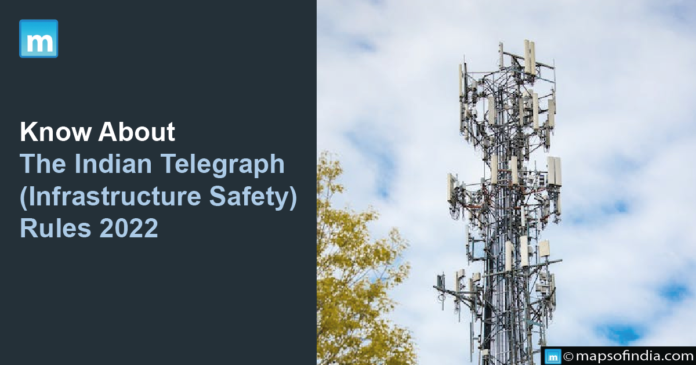The Department of Telecommunications has formulated the Indian Telegraph (Infrastructure Safety) Rules 2022 under the Ministry of Communications. The communication needs of the country are increasing with the development of Digital Infrastructure and Services, which are pivotal to the country’s growth and well-being. To fulfill these needs of the citizens, the Central Government is focused on establishing secure, accessible, resilient, and affordable Digital Communications Infrastructure and Services.
The Indian Telegraph (Infrastructure Safety) Rules 2022:
- A notice must be given to the licensee by any person who wishes to exercise a legal right to dig or excavate any property which can cause damage to a telegraph infrastructure.
- The information shall include the person’s details such as name and address, agency details, date and time of the start of the exercise, contact details, description and location of the exercise, and the reasons for it.
- After getting permission, the person needs to take appropriate preventive measures while excavating to avoid damaging the telegraph infrastructure.
- Damage charges will be paid by the person who causes damage to the property by excavating or digging.
- The liable charges should be paid by the person as computed by the authority to restore the damages.
Advantages of the rules
By the imposed rules, various damages can be prevented. Different utilities will be saved from unwanted cuts, the restoration cost can be saved, and it will ultimately save the business and associated tax loss to the Government. While restoring the breakdowns, difficulties, and inconveniences the citizens face can be reduced by the better synergy between the agencies.
Ministry of Communications
The Government of India has established the Ministry of Communications responsible for postal services and telecommunications. It was part of the Ministry of Communication and Information Technology until July 19, 2016, which was later divided into the Ministry of Communication and the Ministry of Electronics and Information Technology. Now it has two departments: the Department of Posts and the Department of Telecommunications.
Department of Telecommunications
The Department of Telecommunications, also known as the Door Sanchar Vibhag, is the department that concerns itself with licensing, policy, and coordination matters relating to telephones, telegraphs, data, wireless, telematics services, and facsimile. The main objectives of this department are e-Government, e-Industry, e-Innovation, e-Learning, e-Security, e-Inclusion, and Internet Governance.
Department of Posts
This department wholly owns the India Post and operates one of the world’s most extensive and oldest mail services. The Indian Post Office Acts of 1898 governs the Department of Posts. Along with the traditional postage service, the new services introduced by the department are e-Post, e-BillPost, Postal Life Insurance, International money transfers, Mutual funds, and Banking.




